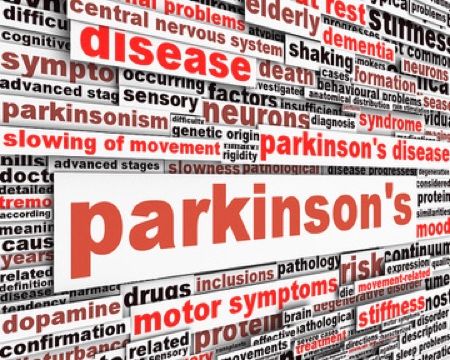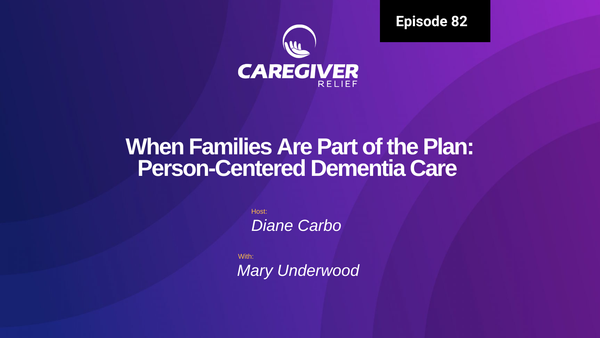How Common is Lewy Body Dementia?

Lewy Body Dementia (LBD) is a progressive neurological disorder that affects an estimated 1.4 million people in the United States alone. It is a type of dementia, meaning it is characterized by decline in thinking skills and memory. These changes can be so severe that they eventually interfere with an individual's daily activities.
In LBD, abnormal proteins known as “Lewy bodies” accumulate in regions of the brain that control movement, behavior, and mood. This buildup of proteins interferes with the brain’s normal functioning and can cause a wide range of physical and mental symptoms, including difficulty speaking or understanding language, thought disturbances, and hallucinations. Ultimately, LBD leads to a gradual decline in cognitive functioning and memory, as well as physical impairments.
It’s important to note that the symptoms of LBD may vary from person to person and can change over time. For example, some individuals may experience more physical symptoms while others may experience more mental or emotional symptoms. Additionally, many people may experience more severe symptoms during certain times of day or in certain environments.
LBD is considered one of the most common forms of dementia after Alzheimer’s disease, so it’s important to have a basic understanding of the condition. Understanding LBD can help those affected by the disorder receive an accurate diagnosis, access appropriate treatments, and ultimately enjoy a higher quality of life.
The signs and symptoms of Lewy Body Dementia (LBD) can vary greatly from person to person. It can affect the brain in many ways, with mental, physical and behavioral changes.
Mental Symptoms:
The most common mental symptoms associated with LBD are cognitive changes such as impaired thinking, reasoning and memory. This can mean making mistakes when it comes to understanding and remembering new information, inability to multitask or plan, confusion which can lead to delusions and hallucinations. People with LBD may also experience a change in personality, such as apathy, depression, anxiousness or changes to one’s decision-making skills.
Physical Symptoms:
Lewy Body Dementia can also cause physical symptoms, such as slow movements, difficulty walking, stiffness of the body, trembling, balance problems or an absence of facial expression. It can also affect speech, with some people having difficulty finding the right words or even slurred speech. Other physical symptoms include problems with eating, swallowing and coordination.
Behavioral Symptoms:
Behavioral changes related to LBD can range from mild to severe. Behavioral symptoms can include increased aggression or agitation, pacing, restlessness or excessive sleeping, hallucinations, delusions, fear, anxiety and paranoia. People with LBD may also display compulsive behaviors like hoarding and repeatedly asking questions.
It is important to note that not all people may experience the same symptoms, and the severity of the symptoms may differ between individuals. It is also important to remember that with the right medical support and therapies, many of the symptoms of Lewy Body Dementia can be managed.
Causation of Lewy Body Dementia - Possible Causes
Lewy Body Dementia (LBD) is an umbrella term for two geriatric neurodegenerative diseases, Dementia with Lewy Bodies (DLB) and Parkinson's Disease Dementia (PDD). People with either of these illnesses experience cognitive impairment, movement difficulties, and other changes in behavior or thinking patterns. There is currently no cure for LBD, and the causes remain largely unknown.
The leading theory suggests that Lewy Bodies (abnormal deposits of protein) found in certain areas of the brain are responsible for the breakdown of nerve cells and cognitive decline associated with LBD. While the precise cause of these abnormalities is unclear, research suggests that they could be linked to genetic mutations or lifestyle risks such as smoking or head injuries.
Other potential triggers for Lewy Body Dementia development could include the presence of pre-existing conditions, exposure to environmental toxins, and aging. Ultimately however, more research is needed to better understand the underlying causes of this complex illness.
It can be difficult to confirm if someone has Lewy body dementia. Diagnosis is based on the patient’s medical history, physical and neurological exams, reports of their daily activities, and lab and imaging tests.
A doctor may ask questions about changes in the patient's memory, behavior and other abilities, as well as any medications they take or other health conditions. It is important to provide as much information as possible to support the diagnosis.
The doctor will also administer a physical exam to check for signs of the condition, such as tremors, rigidity, slow movement, and loss of facial expression or rigidity. The doctor may also order laboratory tests such as blood tests and urine tests to rule out other conditions that could be causing the symptoms.
Imaging tests can be used to measure brain activity or detect tissue damage in the brain that might be associated with dementia. These tests may include a CT scan, MRI, or PET scan.
Finally, a doctor may order specialized tests that measure cognitive abilities, such as memory, language, orientation, and problem-solving skills. These tests can help diagnose dementia early on and monitor its progression over time.
If the individual has been experiencing changes in their cognition and behaviors that are consistent with Lewy body dementia, they may be referred to a specialist such as a neurologist, geriatrician, or psychiatrist for further evaluation and confirmation. After a diagnosis has been made, the doctor can recommend the best treatment options and provide support for the patient and family.
Treatment options for Lewy Body Dementia
Treatment options for Lewy Body Dementia can be divided into two main categories: physical and mental therapies. Physical therapies may include medications to help with symptoms such as psychosis, depression, or motor control issues. Additionally, exercise and other lifestyle modifications may help delay the progression of the condition. Mental therapies may include types of counseling such as cognitive behavioral therapy, designed to help individuals cope with the emotional and psychological distress that can come with a diagnosis of Lewy Body Dementia.
In terms of medication, there are a variety of different drugs which have been used to treat the symptoms of Lewy Body Dementia. These include antipsychotics, antidepressants, anticonvulsants and sedatives. However, it is important to note that no one drug is guaranteed to work for all patients. The treatment regime should be tailored to the individual, and their doctor should carefully monitor the patient's response to the medication.
Aside from medication, lifestyle modifications can be very important in helping to manage the symptoms of Lewy Body Dementia. Regular exercise, a balanced diet and regular sleep patterns can help increase alertness and concentration, as well as reduce the risk of falls. Additionally, regular mental activities such as reading, crosswords or playing board games can help slow the decline of cognitive abilities.
Finally, there are a range of therapies available to help individuals with Lewy Body Dementia cope with the psychological and emotional distress which can accompany the condition. Cognitive behavioral therapy (CBT) is commonly used to help individuals learn ways to manage their symptoms, while supportive psychotherapy can help to best manage the challenging behaviors associated with the condition.
Quality of Life for Lewy Body Dementia
Unfortunately, while Lewy body dementia is considered a serious neurological condition, the expected quality of life and longevity of individuals living with it can vary greatly. Early diagnosis and comprehensive management are essential in managing this disease and may help improve outcomes.
On a physical level, patients may experience fluctuations in movement, coordination, balance, and fine motor skills. Other common physical symptoms include tremors; muscle rigidity; difficulty speaking, chewing, and swallowing; and difficulty walking.
Cognitively, patients often experience changes in cognition, including difficulty with memory, judgment, and problem-solving skills. In addition, most patients experience psychological deficits in executive functioning, attention, decision-making, and language. Behavioral problems, such as mood swings, agitation, anxiety, and hallucinations, are also common.
In terms of life expectancy, people living with Lewy Body Dementia often experience a gradual decline in overall health. The disease is progressive, and symptoms usually worsen over time. Many patients eventually require full-time care and assistance with activities of daily living.
The good news is that many treatments are available to help manage the symptoms of Lewy Body Dementia. Through proper treatment, medication, and lifestyle modifications, those living with Lewy Body Dementia can improve their quality of life and potentially extend the length of their lives.
Latest Research into Lewy Body Dementia - Hot Topics and Recent Advancements
Lewy Body Dementia is a complex and challenging condition to understand, and as a result, the medical research into it is constantly changing and evolving. As new studies are released and discoveries made, the latest advances in the understanding and care of Lewy Body Dementia are included in the guide.
In recent years, researchers have made significant advances in the study of Lewy Body Dementia, and the understanding of its causation, diagnosis, treatment and prognosis has grown. There are now a number of promising treatment options for those suffering from the disorder, and the outlook is increasingly positive.
A key focus of recent research studies has been on the potential development of drugs to better treat symptoms associated with Lewy Body Dementia. Studies are also being conducted on the use of non-pharmacological treatments such as cognitive-behavioral therapy and music therapy.
In addition to exploring newer treatments, researchers are also examining potential lifestyle interventions and radiation treatments for more advanced stages of the disorder. Researchers are also exploring the possibility of gene-targeting therapies that could help to slow or stop the progression of Lewy Body Dementia.
Other areas of research include the exploration of the potential relationship between Lewy Body Dementia and Alzheimer's Disease, as well as the development of new diagnostic tests to identify the condition.
Thus, while there is still a long way to go in understanding and treating Lewy Body Dementia, important strides have been taken in recent years and more advancements are expected in the future.
Prognosis of Lewy Body Dementia – What Can Be Expected in the Future?
Lewy body dementia is a progressive disorder. This means that over time, individuals with the disease will experience more symptoms and decline in their overall health. However, the rate at which the disease progresses can vary from person to person.
Generally, those who are diagnosed early on (in the milder stages) can expect a longer survival time. It is estimated that the average survival time for someone with Lewy body dementia is five to eight years. However, this can vary depending upon individual characteristics, such as age, overall health, and stage of the condition.
One factor that may indicate a decreased life expectancy is the presence of Parkinson’s disease. Individuals with both conditions tend to experience a more rapid rate of decline and may have a shorter survival time.
It is also important to keep in mind that the presence of this condition can cause changes in a person’s mental state, physical abilities, functioning, and quality of life. Over time, these changes may become severe and significantly impact an individual’s ability to care for themselves or function normally.
In terms of treatment options, those with Lewy body dementia are typically treated with a combination of medications, therapy, and lifestyle changes. These treatments are aimed at decreasing symptoms and improving quality of life. However, there is no cure for the condition and, over time, symptoms will progress.
It is important for individuals with the condition, as well as their caregivers, to be aware of the prognosis and understand what challenges may arise in the future. Knowing the long-term outlook and planning accordingly can help ensure that individuals receive the best care and support possible.
Living with Lewy Body Dementia can be overwhelming and frightening for both the patient and their family and friends. Fortunately, there are a variety of support groups and resources available to help those affected by this disease.
Support Groups and Organizations
There are many organizations dedicated to enhancing the lives of those affected by Lewy body dementia and providing emotional, physical, and financial assistance. The Lewy Body Dementia Association (LBDA) is a well-known organization that works to raise awareness and provide support for this debilitating disease. LBDA offers educational materials, support group listings, a helpline, and other resources to those affected by Lewy body dementia.
The Alzheimer’s Association is another great source of information and support for those with Lewy body dementia. The association offers information on the disease, a helpline, a daily newsletter, and forums for connecting with other individuals affected by Lewy body dementia.
Online Resources
In addition to physical organizations, there are also many online resources available for those dealing with Lewy body dementia. Websites like talkLBD.org and Lewy Body Dementia Journey offer weekly blogs, webinars, and other resources to help keep individuals up to date on the latest advances in Lewy body dementia.
Other helpful websites include the Lewy Body Dementia Resource Center, Lewy Body Dementia Advocacy Network, and LBD Caregiver Alliance. These sites offer advice and information from healthcare professionals, as well as stories from individuals who have been impacted by Lewy body dementia.
Support Groups
Many support groups are held for patients and caregivers throughout the year. These support groups are usually hosted by community centers and hospitals, and can be great sources of comfort and information. Support groups can provide comfort and understanding for those affected by Lewy body dementia, as well as give individuals and their loved ones an opportunity to share their experiences.
These support groups are often free and open to anyone interested in learning more about Lewy body dementia. Many of these meetings are held on a regular basis, so be sure to check in your local area for more information.
Conclusion
Lewy Body Dementia can be an overwhelming and isolating experience for all those affected. Fortunately, there are a variety of support groups and resources available to provide comfort, information, and assistance to those dealing with the disease. From professional organizations to online support groups, it is important to remember that you are not alone.
Potential Alternatives to Lewy Body Dementia
Lewy Body Dementia can often be misdiagnosed as other conditions, including Alzheimer's Disease and Parkinson's Disease. It is important to understand the differences between these diseases, and how they may be mistaken for Lewy Body Dementia.
Alzheimer’s Disease and Lewy Body Dementia have many similarities, however, there are several key differences between them. For example, Alzheimer’s Disease generally presents with various types of memory loss, while Lewy Body Dementia often impacts both memory and movement. Additionally, Alzheimer’s Disease can present with hallucinations and delusions, while Lewy Body Dementia usually presents with Parkinsons-like issues such as tremors and difficulty walking.
Parkinson’s Disease may also be mistaken for Lewy Body Dementia. While there are similarities in terms of symptoms, such as difficulty walking and tremors, the two diseases present differently. Lewy Body Dementia is a type of dementia that usually involves problems with memory, while Parkinson’s Disease is a movement disorder. Additionally, Lewy Body Dementia is known to cause visual hallucinations, as well as delusions and changes in behavior. Parkinson’s Disease does not often present with these symptoms.
It is important to recognize the differences between these diseases in order to receive an accurate diagnosis. It is advised to speak with your doctor for more information about any conditions which may be similar to Lewy Body Dementia, so that you can make informed decisions about your health and wellbeing.
Examples of Lewy Body Dementia
Lewy body dementia is a progressive disorder, meaning that the symptoms and severity can worsen over time. Some individuals may have mild forms of the condition while others may experience more severe symptoms. Below are some notable examples of individuals who have been diagnosed with Lewy Body Dementia:
- Robin Williams: In May of 2014, after the actor’s passing, it was revealed that he was suffering from Lewy Body Dementia. His family stated that the actor had been struggling for some time with the condition.
- Glen Campbell: In 2011, Country music star Glen Campbell was diagnosed with Lewy Body Dementia. The musician released an album in June of 2017, shortly before passing away in August of the same year.
- Pete Smyth: Pete Smyth is a British football manager and former player who was diagnosed with dementia in 2015. Smyth made a total of 94 appearances for his club, Portsmouth Football Club, between 1982 and 1989.
Additionally, there are many other people who have been diagnosed with Lewy Body Dementia, who have chosen to keep their identity private. It is important to remember that any diagnosis of Lewy Body Dementia should be treated with respect and empathy, as it is an incredibly difficult condition to live with.
Lewy body dementia (LBD) is a progressive neurodegenerative disorder that affects memory and thinking. It is one of the most common types of dementia, impacting many adults over the age of 65. This guide will provide an overview on LBD, from symptoms and diagnosis to possible treatments and quality of life.
It is important to note that the primary cause of LBD is still unknown, though some risk factors have been identified. Diagnosis is based on a comprehensive assessment of the individual's symptoms. Treatment options vary, depending on the severity of the condition, and may include medications to manage symptoms and therapies to support emotional and physical wellbeing. With proper diagnosis and treatment, individuals with LBD can continue to live productive lives.
By understanding the symptoms, risk factors and available treatments, it is possible for those affected by this condition to lead full and meaningful lives. This guide is intended to provide readers with a comprehensive look at lewy body dementia, including its causes, diagnosis, treatments and prognosis. We will also discuss the latest research, support groups, and resources to help those affected by this condition.
How Common is Lewy Body Dementia?
Lewy Body Dementia (LBD) is a progressive neurodegenerative disorder that affects people of all ages. It can cause confusion, memory loss, depression, and Parkinson's-like physical symptoms. LBD is one of the most frequent forms of dementia, accounting for 10-20% of all cases of the disease.
So, how common is Lewy Body Dementia? Recent estimates suggest that the prevalence of LBD is approximately 1 million in the United States, with about 180,000 new cases reported annually. This means that out of every 1000 people in the US, roughly one has Lewy Body Dementia. Worldwide, it is estimated that over 4 million people have LBD.
This means that while Lewy Body Dementia is an incredibly common and serious condition, it often goes undiagnosed or misdiagnosed. As LBD is a progressive and degenerative disorder, it is important to be aware of its signs and symptoms so that one can get timely, appropriate treatment.
You might also like this article:










